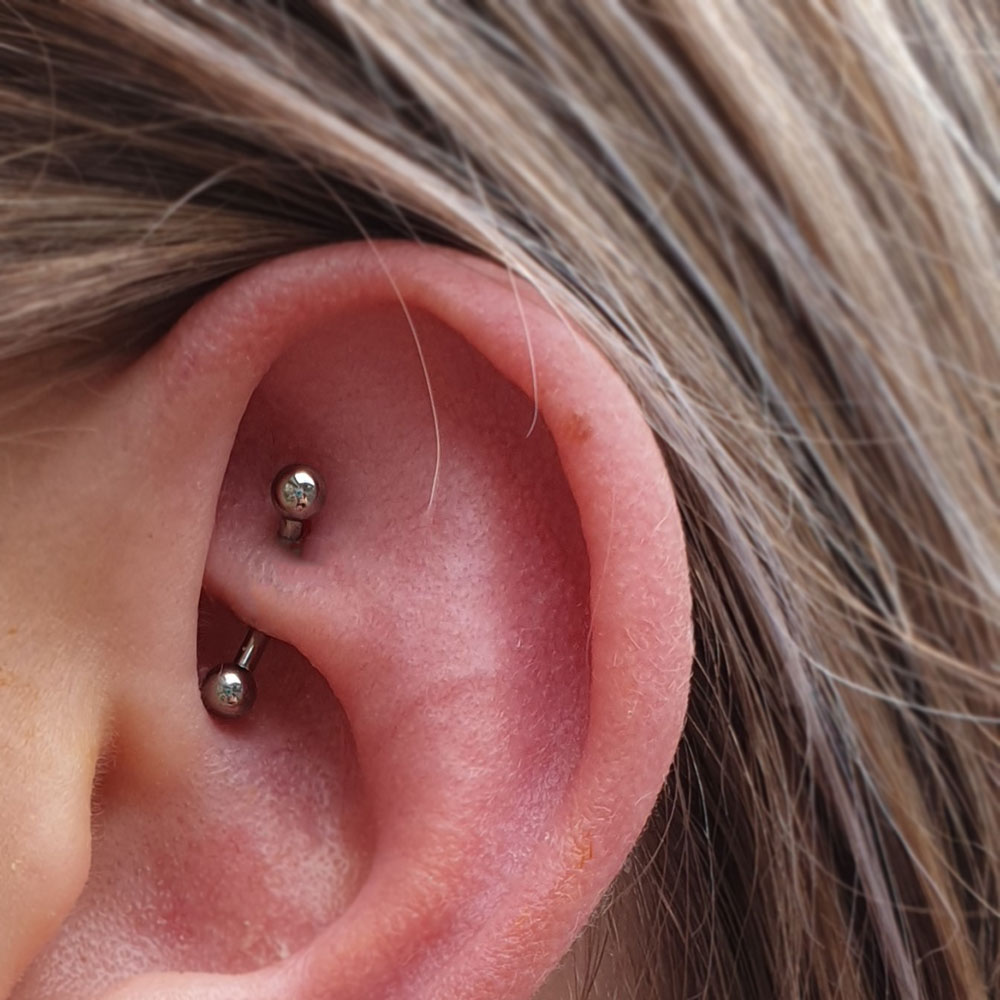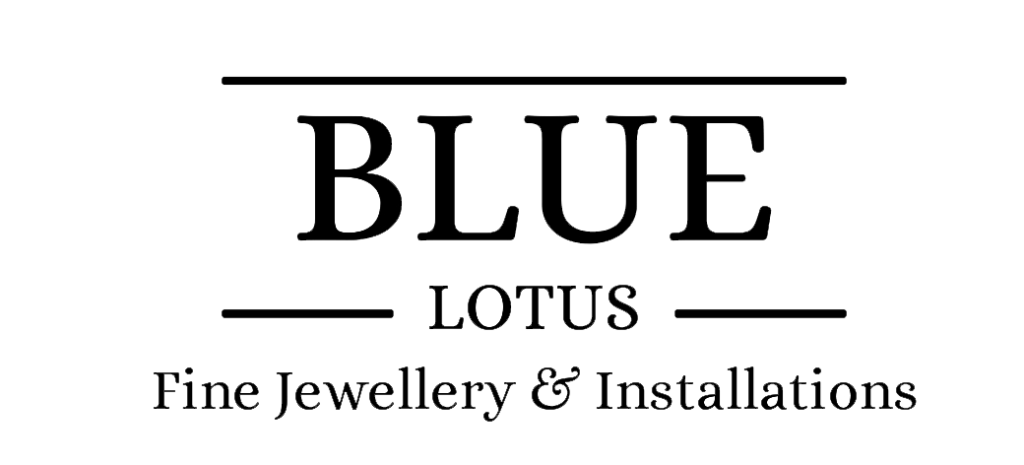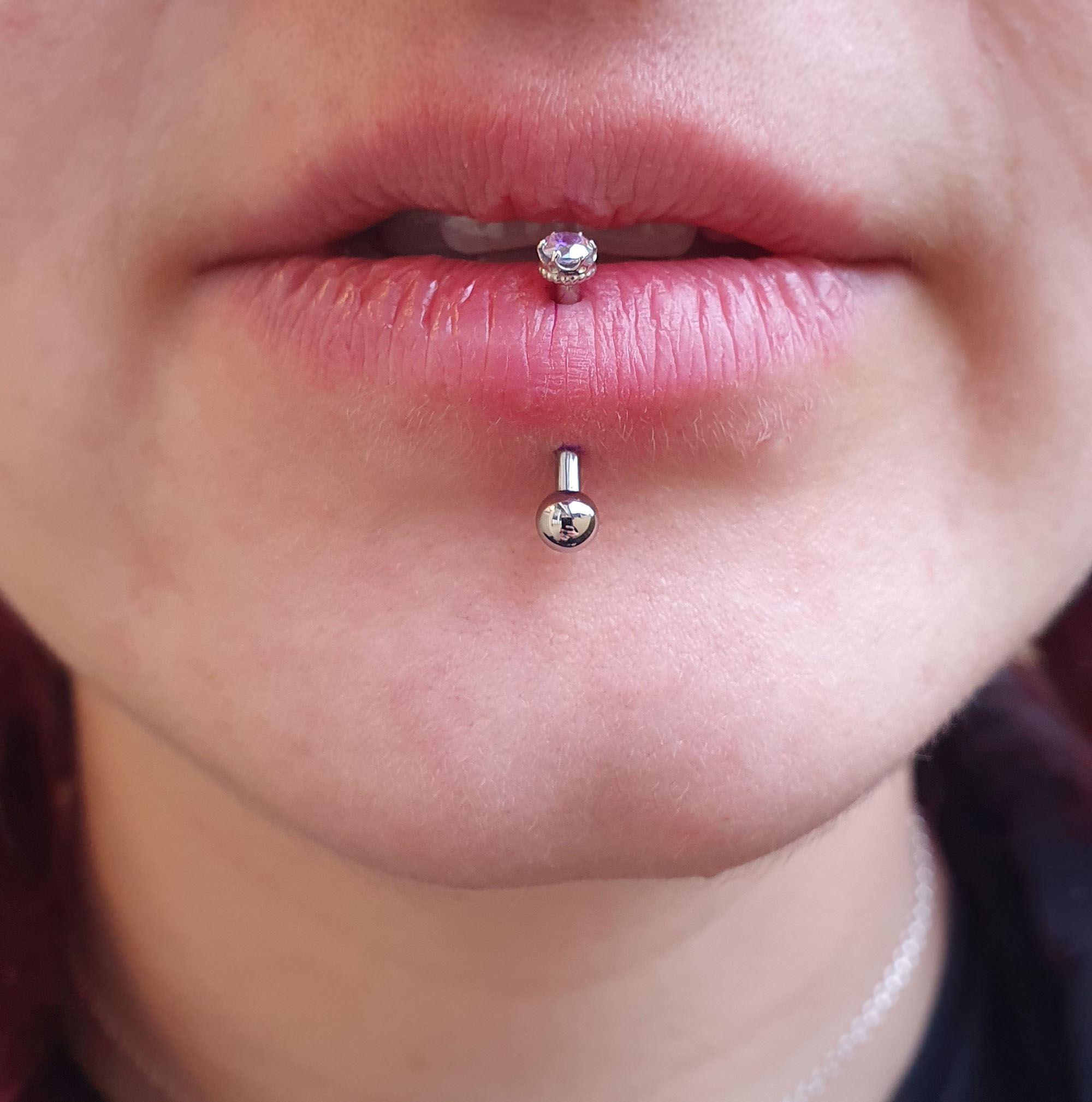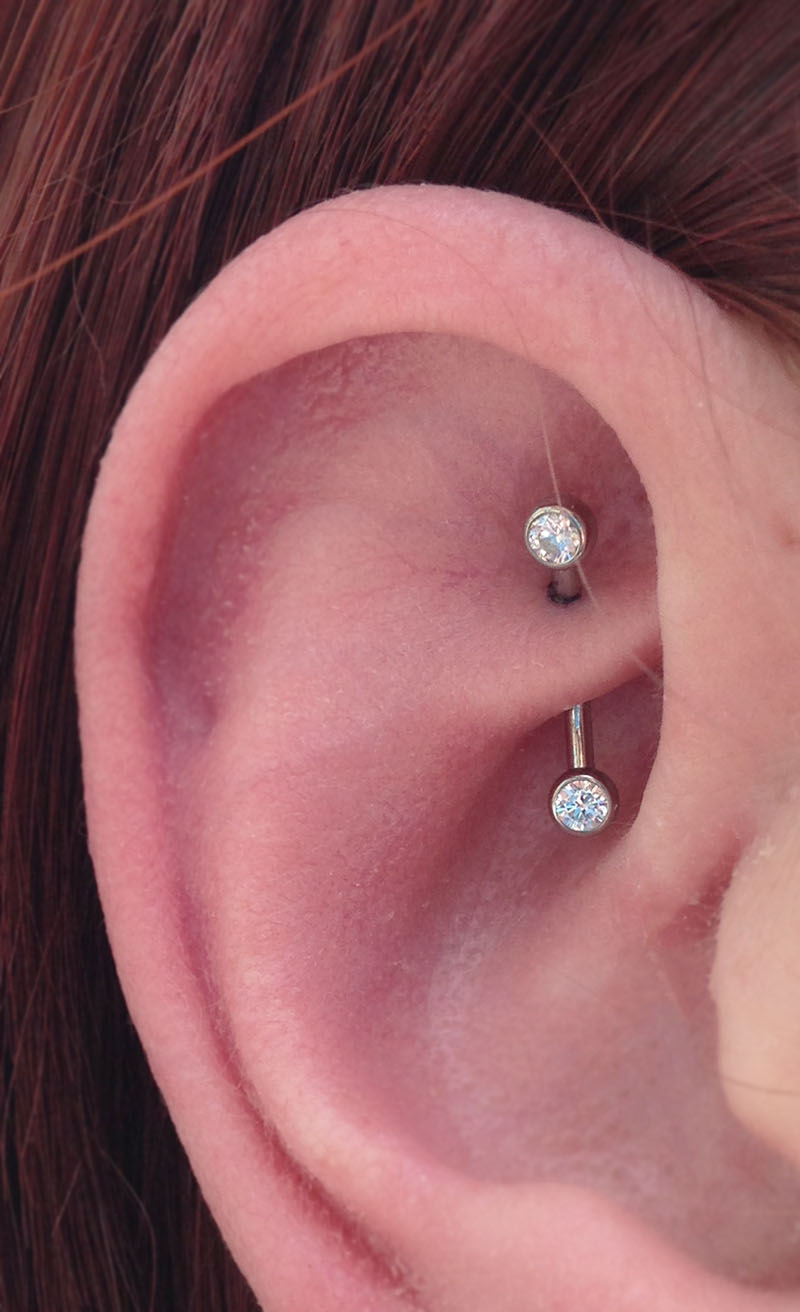Just for this piece, we are going to talk about cartilage/ear piercings as this is the most common issue we most frequently see with our clients when offering advice at reception.
Room to grow
Once you have been in for your new piercing with our piercers, they cover a lot of things when it comes down to healing your new piercing. They talk about aftercare and the importance of choosing quality jewellery. Something that often gets forgotten by clients is the step of downsizing your jewellery. This is critical to the overall healing of your piercing.
Most cartilage piercings at first require jewellery that is slightly longer in length, or wider in diameter to allow for the swelling that usually arises. Yes, this length may be slightly irritating, its a necessary evil to prevent jewellery from embedding into the tissue.
The initial jewellery may look rather long in the pictures above, but we took those straight after the piercing took place. 2 or 3 weeks later the flat back of that labret was flush against the tragus tissue and the rook was rather plump!
After being pierced
You are often invited back for a ‘check-up’, at this point we can see how your piercing is healing. We see if we can help you fix any minor issues that may have arisen that you may not have noticed and all importantly change your jewellery to something shorter if its needed.
This visit is just you walking into the studio for us to see you and your piercings overall health. We would then book you in for an appointment at an appropriate time to get the jewellery adjusted for the rest of the piercings healing time.
We have established that longer jewellery is needed, but overly long jewellery can cause problems as well. It is more likely to get caught on clothing, hair or snagged, causing the piercing become to be irritated and upset, thus making the already lengthy healing time of cartilage even longer. This is another reason why its important to see a reputable piercer.
With many cartilage piercings, longer jewellery being left in too long can cause the piercing to migrate. (A shift in the piercing channel which makes the piercing wonky)
So what do I do?
Some people are ready sooner than others, we give the most ‘average’ figure for our check up invitation. Usually after a few weeks to a month is adequate time to change a helix piercing. Don’t leave it longer, this leaves a window of opportunity open where you are more likely to catch your piercing and then go through all the swelling again and delaying your downsize. Don’t forget, most cartilage piercings take around a year to heal, so after this change, its really important you leave it in until it has fully healed!
After all this being said, when can you actually come to change your jewellery to something that is a good, snug fit?
This is where it starts to vary from each client/piercing to the other. Your piercer would have worked this out with you and wrote it on your care sheet to take home with you.

You will of course have to pay for your shorter jewellery, getting a piercing is a project. It takes time and a little dedication towards its healing and care. Aesthetically pleasing piercings are worth a little bit of hard work. Good piercings ain’t cheap, and cheap piercings ain’t good!
Thanks for reading, we feel better for sharing this with you 🙂


